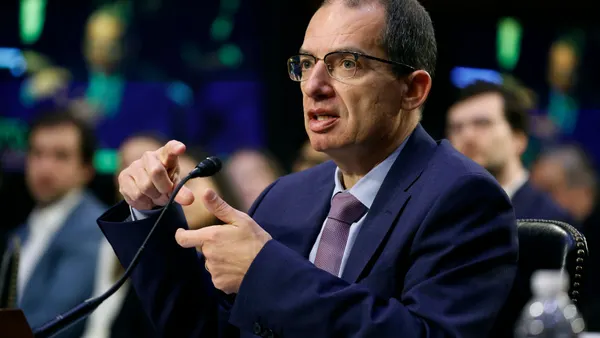2008 VIEW on ESolutions EPRESCRIBING It’s no secret that thousands of private practice physicians throughout the country face a financial crunch. Declining reimbursement rates have produced a profoundly negative impact in several areas of healthcare — particularly in oncology, nephrology and other special ties where medications are administered within the practice. At the same time, pharmaceutical manufacturers face challenges of their own. Research and development pipelines no longer appear as robust as they did earlier this decade. The Food and Drug Administration approved only 17 new drugs in 2007, one of the three worst years for approvals the last three decades. All of these factors make it more important than ever for manufacturers to have patients start on therapy successfully and then maintain therapy as prescribed once they have started. New legislation could possibly provide some relief to both constituencies, all the while promising improvement in patient care. Passed in July 2008, the Medicare Improvements for Patients and Providers Act (MIPPA) allows physicians to receive an additional 2% on Medicare charges by participating in the Physician Quality Reporting Initiative (PQRI). Perhaps more exciting, MIPPA also allows physicians to receive another 2% incentive payment for prescribing patient medications electronically. As a result, interest in eprescribing has exploded, and the industry is currently waiting for more details to be published related to the operational and process details associated with this new incentive. Financial Implications For physicians, the financial impact of the new legislation is clear. Provide successful reporting on eprescribing and PQRI and receive up to 4% extra on Medicare claims. In fact, these incentive payments represent the only significant increase in Medicare physician reimbursement for 2009. This unexpected bonus during a time of fiscal uncertainty may be exactly the motivation needed by practices that have not yet transitioned to eprescribing — though all practices that intend to receive these incentives need to act quickly. MIPPA provides the 2% incentive only for 2009 and 2010. After 2010, the incentive begins to drop and eventually turns into a penalty for eligible practices who do not report the use of eprescribing on at least 50% of eligible patients. (See the chart for a schedule of incentives/penalties.) The Technology Benefits Aside from the financial incentives that eprescribing adoption can bring under MIPPA, the technology itself offers benefits to physicians and patients. A 2004 report from the Center for Information Technology Leadership estimated that eprescribing could prevent 2 million adverse drug events annually, of which 130,000 are life threatening. By having a wealth of clinical information at the prescriber’s fingertips, it makes the prescription process faster, easier and safer. By having formulary data available, eprescribing can make the process more cost efficient. None of this is new. Previously, many physicians simply did not want to incur the costs of new technology, the costs of retraining themselves and their staff, the costs of change without being positive of clinical, operational and financial improvement. But now, with government intervention and a tangible incentive to take a closer look at the technology, physicians may be forced to recognize that time for change is at hand. Potential for Growth For manufacturers, the change can’t come soon enough. Facing a short term future without an abundance of new, blockbuster drug launch es, manufacturers are instead seeking new ways to build on the success of their current products. Eprescribing offers potential here as well. By allow ing physicians to submit prescriptions directly to pharmacies, eprescribing can increase the chance that prescriptions will be filled and refilled in a timely manner. By guarding against adverse drug events, eprescribing improves the opportunity for patients to remain on therapy. And by cross checking formularies, eprescribing reduces the likelihood that patients will be surprised by the cost of therapy and become noncomplaint as a result. This is not to say that eprescribing is a silver bullet for the obstacles that stand before physicians and manufacturers, but it is a step in the right direction. And with new financial motivation for physicians to adopt eprescribing, the United States government has effectively told the healthcare industry that the time to take that step is now. For more information about the new eprescribing incentive, go to http://www.cms.hhs.gov/pqri. AmerisourceBergen Specialty Group AMERISOURCEBERGEN SPECIALTY GROUP provides the comprehensive resources needed to effectively launch, market, support and deliver specialty pharmaceuticals to providers and patients. For more information, visit www.absg.com. Medicare Incentives Push EPrescribing to Top of Mind Peyton Howell, MHA, President, Consulting Services & Health Policy Interest in eprescribing has exploded, and the industry is currently waiting for more details to be published related to the operational and process details associated with this new incentive. Schedule of Incentives/Penalties Year Incentive/Penalty 2009, 2010 2 percent eprescribing incentive for covered Medicare Part B charges 2011 1 percent eprescribing incentive for covered Medicare Part B charges 2012 1 percent eprescribing incentive for covered Medicare Part B charges OR 1 percent penalty on the same charges for physicians not using eprescribing 2013 0.5 percent eprescribing incentive for covered Medicare Part B charges OR 1.5 percent penalty on the same charges for physicians not using eprescribing 2014 No eprescribing incentive. 2 percent penalty on Medicare Part B charges for physicians not using eprescribing
An article from








